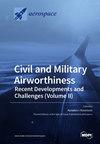气体模型对低温流动数值模拟的影响
IF 2.2
3区 工程技术
Q2 ENGINEERING, AEROSPACE
引用次数: 0
摘要
在低温条件下,气体表现出明显的理想行为偏差,常用的气体模型可能无法充分反映低温气体的热力学特性,从而影响在低温条件下使用各种热力学和传输模型进行的数值模拟。研究结果表明,通过不同等熵关系获得的空气动力学特性的相对误差值得注意,阻力系数的最大相对误差达到 16%。状态方程、粘度模型和导热模型的影响相对较小,压力阻力系数和粘滞阻力系数的相对误差远低于 1%。然而,由于跨音速冲击波/边界层的相互作用,皮肤摩擦系数的相对误差不容忽视。因此,在对低温流动进行数值模拟时,必须选择适当的气体模型才能获得精确的结果。本文章由计算机程序翻译,如有差异,请以英文原文为准。
The Influence of Gas Models on Numerical Simulations of Cryogenic Flow
At cryogenic temperatures, gases exhibit significant deviations from ideal behaviour, and the commonly employed gas model may inadequately represent the thermodynamic properties of cryogenic gases, subsequently impacting numerical simulations using various thermodynamic and transport models at cryogenic temperatures. The findings of this study reveal that the relative errors in aerodynamic characteristics obtained through different isentropic relations are noteworthy, with the maximum relative error in the drag coefficient reaching 16%. The impact of the equation of state, viscosity model, and thermal conductivity model is relatively minor, with relative errors in the pressure drag coefficient and viscous drag coefficient remaining well below 1%. Nevertheless, the relative error in the skin friction coefficient cannot be ignored due to transonic shock wave/boundary layer interactions. Consequently, when conducting numerical simulations of cryogenic flow, it is imperative to select appropriate gas models to attain precise results.
求助全文
通过发布文献求助,成功后即可免费获取论文全文。
去求助
来源期刊

Aerospace
ENGINEERING, AEROSPACE-
CiteScore
3.40
自引率
23.10%
发文量
661
审稿时长
6 weeks
期刊介绍:
Aerospace is a multidisciplinary science inviting submissions on, but not limited to, the following subject areas: aerodynamics computational fluid dynamics fluid-structure interaction flight mechanics plasmas research instrumentation test facilities environment material science structural analysis thermophysics and heat transfer thermal-structure interaction aeroacoustics optics electromagnetism and radar propulsion power generation and conversion fuels and propellants combustion multidisciplinary design optimization software engineering data analysis signal and image processing artificial intelligence aerospace vehicles'' operation, control and maintenance risk and reliability human factors human-automation interaction airline operations and management air traffic management airport design meteorology space exploration multi-physics interaction.
 求助内容:
求助内容: 应助结果提醒方式:
应助结果提醒方式:


